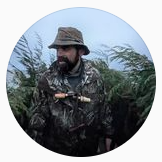Great Expectations
Shawn Swearingen for SPLIT REED
Whether a new or life-long hunter, the desire for birds in hand after watching wings cupped or birds ‘maple leaf’ is more often than not the goal. Anymore, unfortunately, through the pressure of social media, achieving the large ‘pile’ is the only way to measure a successful day. This isn’t a judgment; rather, it’s a question to spur dialogue: Are the tactics and styles of the hunts with the pile goal in mind impacting more than just the birds but also expectations of new hunters?
Sharing the blind with fellow hunters is part of the culture of waterfowling. It is why some of us prefer the comradery of the blind versus freezing alone in a tree stand. The blind sizes though are getting comical at times. Is this through the necessity of conditions? Is it because they only get one or two flights during the day so might as well make the most of it? Are the birds reacting to the pressures (landowner and hunter created) where this is the way they have to be chased? To be clear, this isn’t in reference to the snow goose conservation seasons or in Canada where limits are more liberal on dark geese and ducks. Or is it with sole intent to stack up as many birds as legally possible on a hunt?
We’ve all had epic days where everything comes together perfectly. The scout was on the money. Permission was gained. The birds worked right and everyone shot well. The subsequent high-fiving, tailgate photos, and hours spent cleaning up limits for the freezer create cherished memories. But the days where we limit out with jealousy-inducing photos amongst our buddies have always been considered the exception to the rule in my mind.
Unfortunately, when you get more than a couple of buddies in the blind, limits of 20+ birds per gun can become a massive pile, complete with the pic with sometimes well over 100 birds laid out in a line. Sharing these photos and video clips through social media creates undue pressure for – particularly new hunters – those who aren’t on the X that day. What was once the exception is now the expectation.
In addition to setting unrealistic standards for new hunters, these massive piles are the face of hunting to non-hunters. To them, if they support harvesting wild game at all, they hope all the birds are being utilized to the greatest extent possible. To knowledgeable hunters, there are a host of underlying questions: What kind of tactics are being deployed to reach those limits and how is it impacting the birds behavior?
Of course, there are also other questions that range from hunter safety, ethics, and regulatory concerns:
Either guided or on your own, who is calling the shots in these large blinds?
Being in that blind, are you really shooting your own lane?
How much ‘flock shooting’ is happening and how many cripples are not getting recovered?
Is everyone tagging their birds correctly?
Having hunted with a former federal game warden, there are rules that even a seasoned by-the-books hunter might not be aware of. [Look for future articles on that!] A warden that stumbles on a hunt of ‘party’ shooters would have a field day writing tickets for those that aren’t cautious. All of this is a potential fallout for the unaware just for trying to get those spins of dark geese, greenheads, and ‘the widg’.
Sitting below a large flock of working birds, coming closer with each turn, is what keeps many of us awake at night. Being in that moment as a relatively new hunter can be overwhelming. The importance of a good guide or mentor cannot be emphasized enough in all situations let alone one like this. Shooting your own lane. Not shooting too soon. Not ‘sky busting’ or shooting at passing birds at 60 yards. Species identification, and above all, gun safety
Through the pursuit of the biggest piles, the number of shooters, calling styles, and spreads are more-akin to snow goose conservation season-type tactics for waterfowl species that don’t have as comparatively-liberal limits. This isn’t someone telling you how to do it; rather, this is a veteran hunter asking, “Why are we doing this, are the tactics self-perpetuating it, and should we really be doing it?” The points raised in this article are not to convey distaste in the urge to be successful but rather is a continuing message to be smart, keep it legal, remember your ethics and always- stay safe.
For more Split Reed Original Content, click here!




